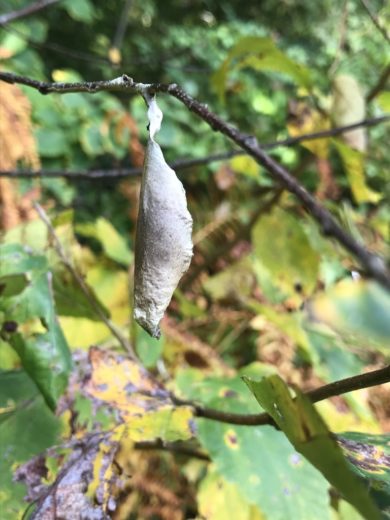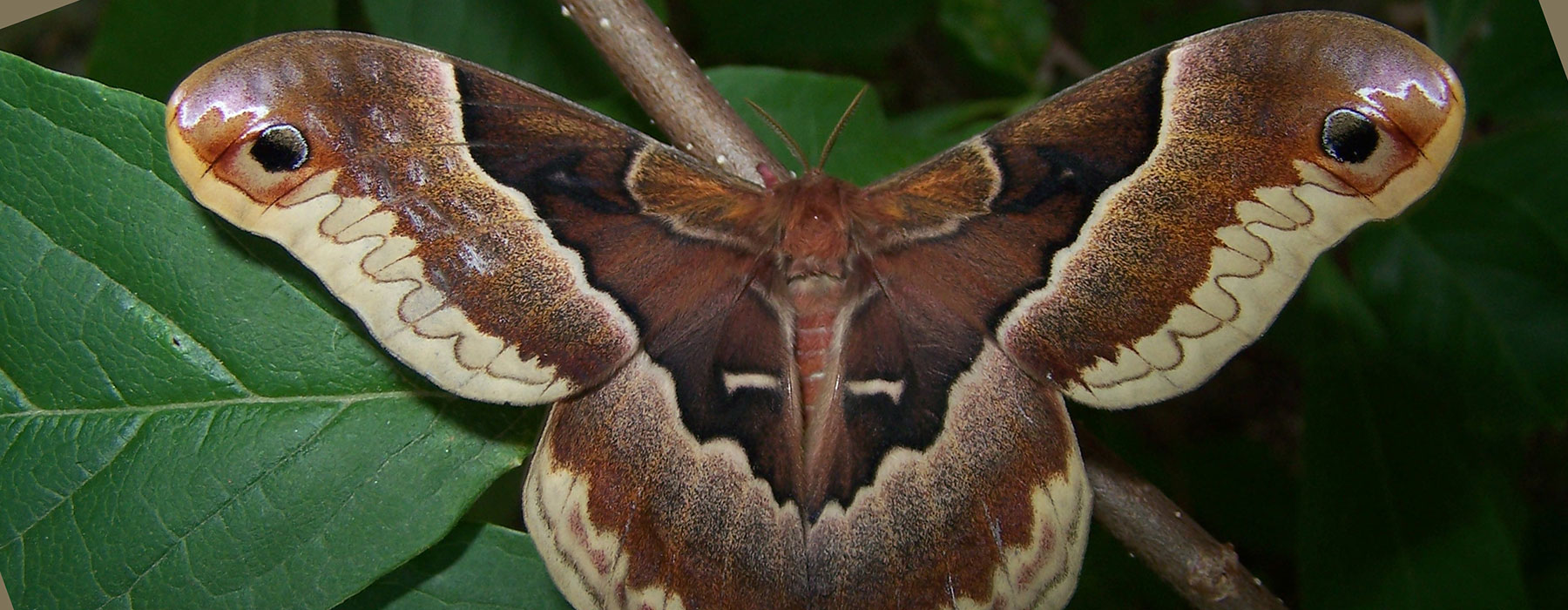A large, rusty colored and strikingly patterned moth of the eastern United States, the Promethea Silkmoth seems to be in decline across much of its range; perhaps due to the introduction of a tachinid fly to control Gypsy Moth populations. Males seek females in the afternoon and early evening, with most mating occurring from 4 PM to sunset. At night, females lay rows of 4-10 eggs on the upperside of host plant leaves in a single cluster. Young caterpillars feed together while older caterpillars are solitary. Older caterpillars do not eat the leaf midvein, but cut the leaf petiole at the base so it falls to the ground, perhaps a defensive measure eliminating visual or olfactory signs of feeding. A caterpillar ready to pupate strengthens a leaf petiole with silk and then spins its cocoon inside the curled leaf. The cocoon hangs from the host plant throughout the winter.
Cocoon Identification

© Mike Hallworth
Cocoons are spun within curled leaves of host plants or nearby plants and hang on the plant throughout the winter. Silk surrounds much of the leaf and strengthens the leaf petiole to keep the leaf attached to the tree. Cocoons are very apparent once the leaves fall from the trees. Silk is light brown or gray in color.
Conservation Status
Resident – uncommon
Vermont S3
Global G5
Distribution and Habitat
Though this moth was only found in the northern part of Vermont during our survey, this does not mean its range does not extend further south in our state. In fact, our lack of records for the Promethea Silkmoth probably has more to do with our primary attention being focused on butterflies rather than nocturnal insects. Their preferred habitat is deciduous woodlands and caterpillars feed on a broad range of plants including Spicebush (Lindera benzoin), Sassafras (Sassafras albidum), White Ash (Fraxinus americana), Lilac (Syringa vulgaris), and many others. Adults do not feed.
Host Plants
- Liriodendron tulipifera – Tulip-tree
- Fraxinus americana – White Ash
- Syringa vulgaris – Lilacs
- Tilia – Basswood/ lindens
- Betulaceae – Birches
- Rosaceae – Cherries, Apples
- Sapindaceae – Maples







